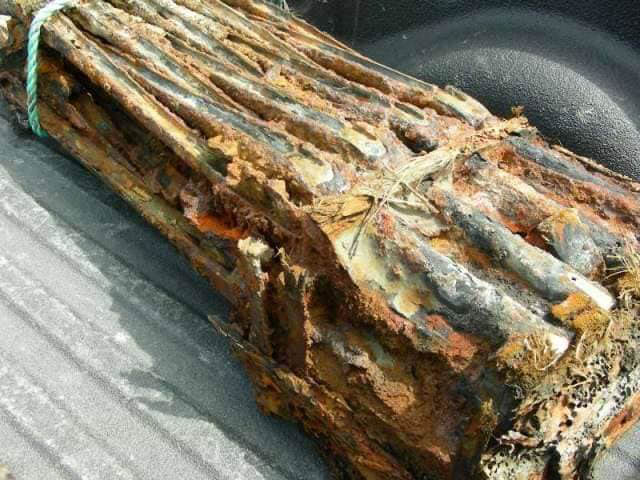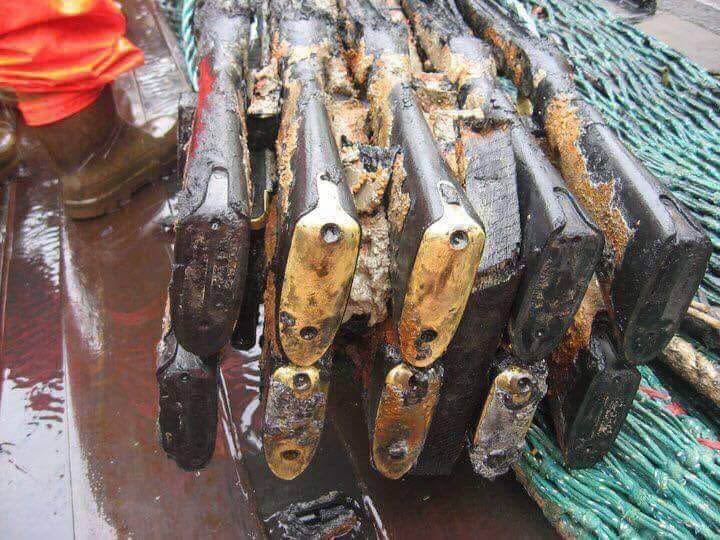A fishing net in 2011 from the trawler, Newfoundland Lynx, snagged a different kind of “fish” in 800 metres of water. 20 P53 Enfield rifle-muskets in a crate were dragged to the surface and surprisingly, these rifle-muskets were in remarkable shape considering they had spent 150 years on the ocean’s bottom. The iron barrels have corroded, however.
The P53 Enfield rifle/musket was found everywhere with the British army and used during the American Civil War and the Crimean War, and were considered a first class rifle. Parts were interchangeable and machine-made from around the 1850’s and 1860’s. The cost for this rifle was $20.00 and was developed by William Pritchett in the 1850s. The 39 in (99 cm) barrel had three grooves, with a 1:78 rifling twist, and was fastened to the stock with three metal bands, so that the rifle was often called a “three band” model. The rifle’s cartridges contained 70 grains (4.5 g) of black powder, and the ball was typically a 530-grain (34 g) Boxer modification of the Pritchett or a Burton-Minié, which would be driven out at about 850 to 900 feet (259 – 274m) per second.
It is thought that these rifles were likely new arms on their way from the Tower of London to arm either regular British Troops in Canada or the new Canadian militia.

After the find in 2011, the P53 Enfields were transported to Memorial University in St. John’s, Newfoundland and have spent most of the time submerged in a tub of chemicals. One of the chemicals used is polyethylene glycol, a bulking agent that prevents the wood from collapsing.
Thousands of hours of work has gone into restoring the crate of guns alone. This time consuming work is nearly completed, and the next step is that they spend a few weeks in a vacuum freeze dryer, and then they should be ready to be displayed in the museum.








